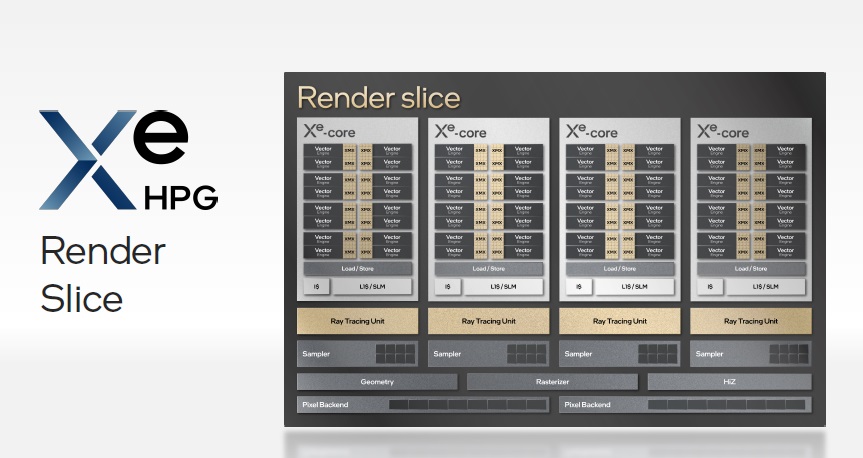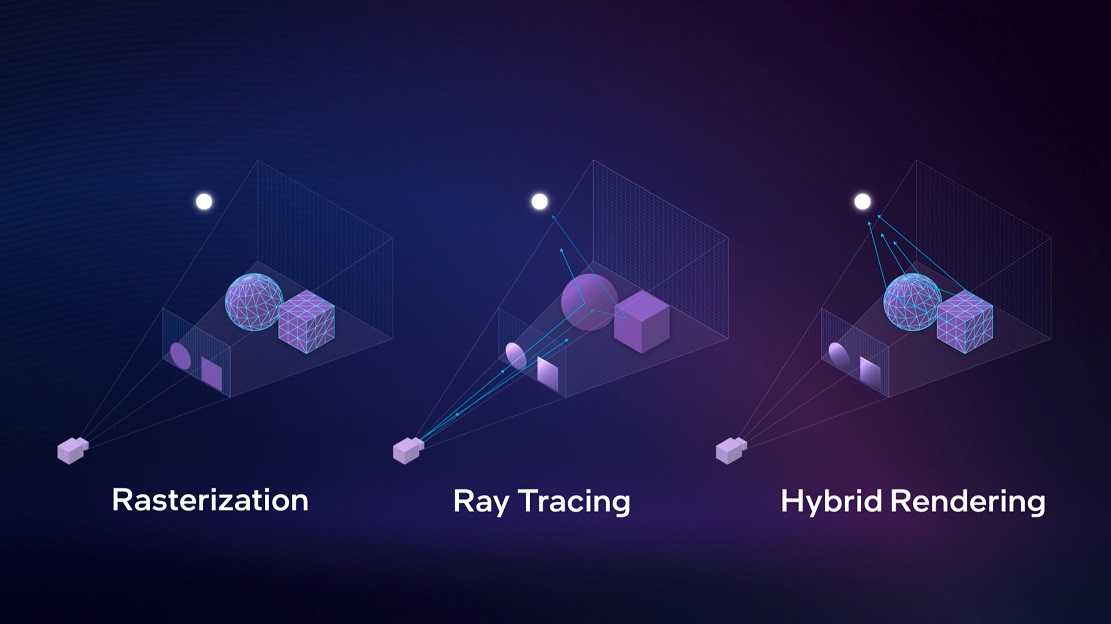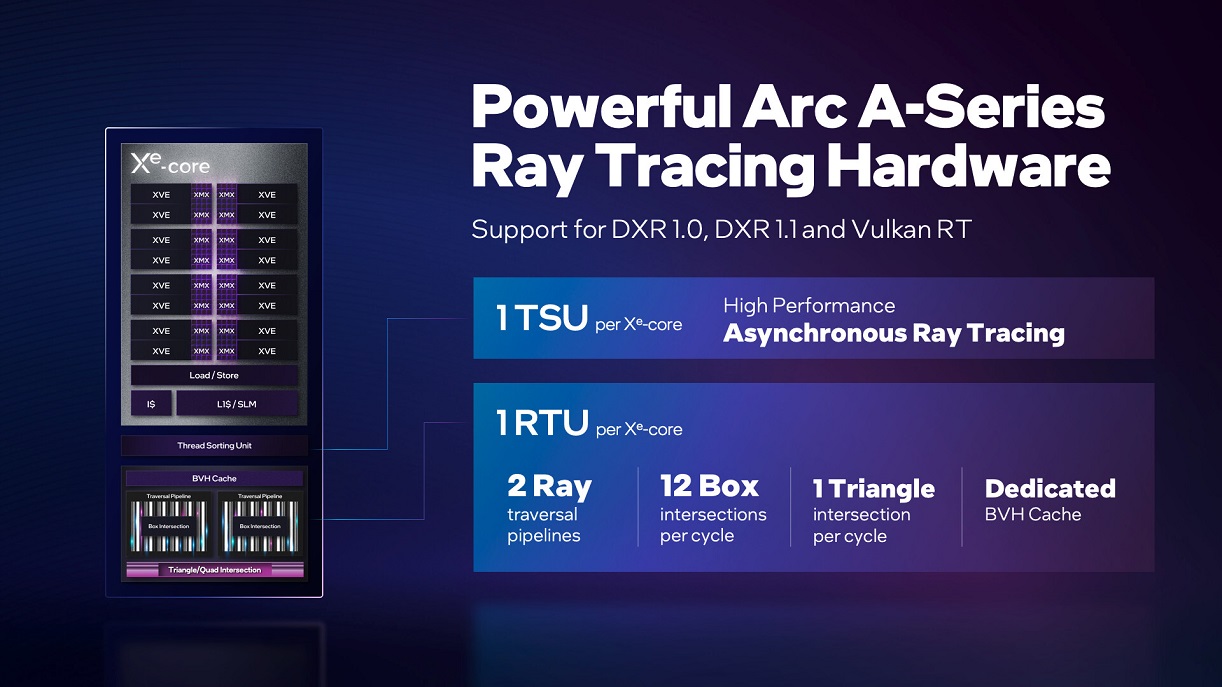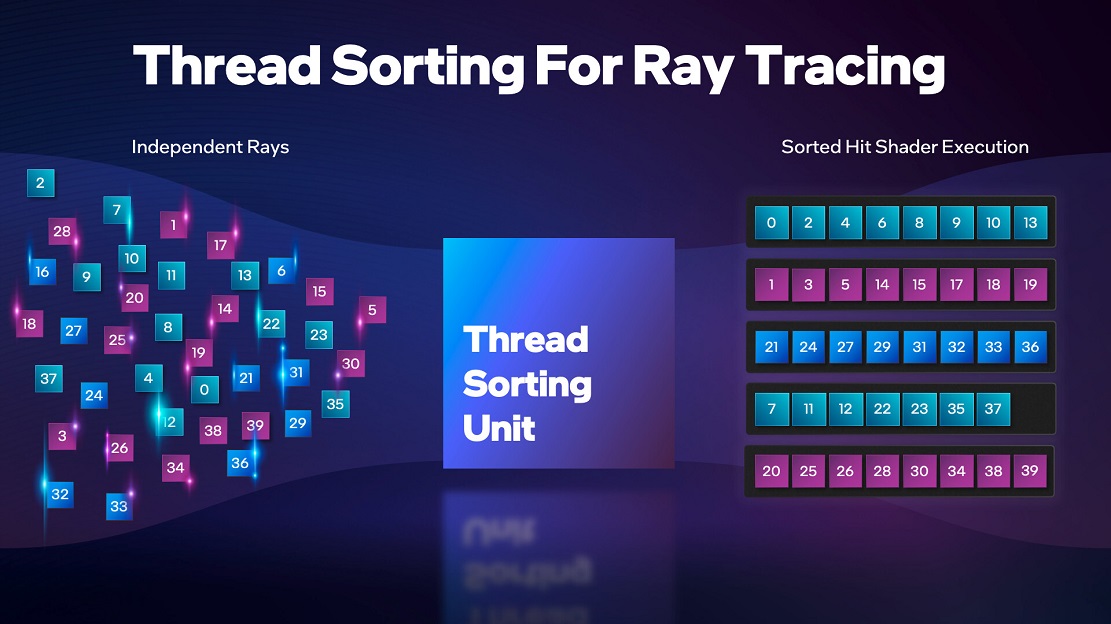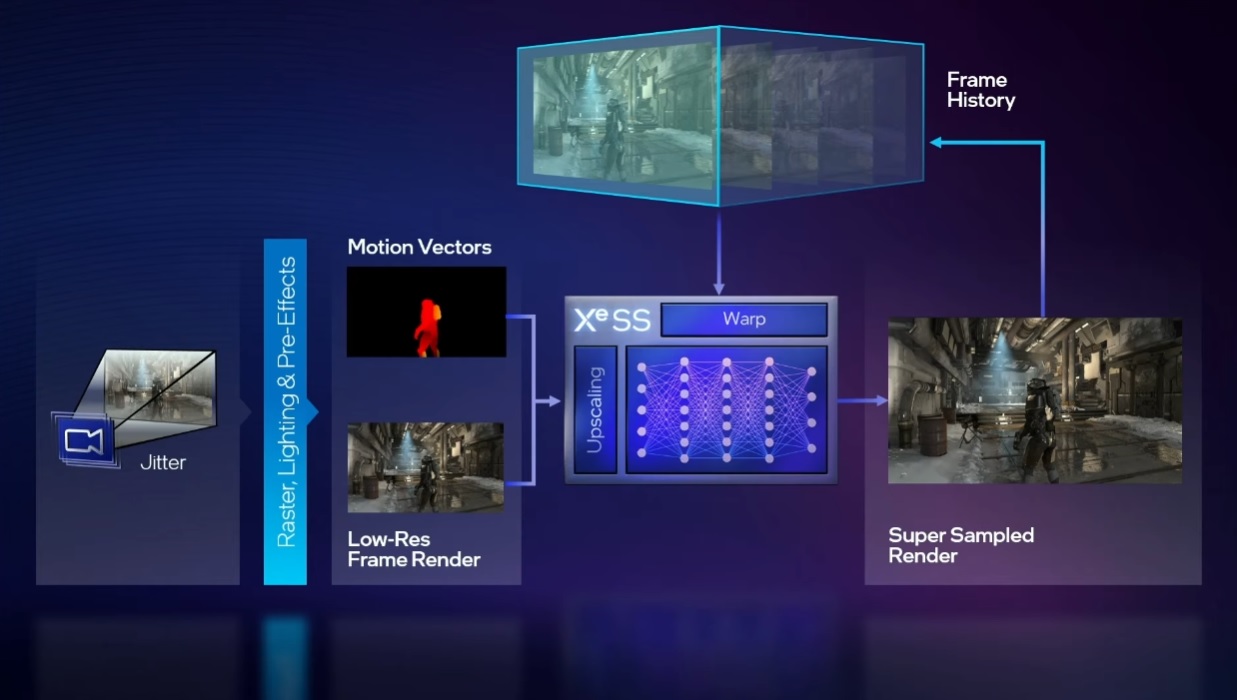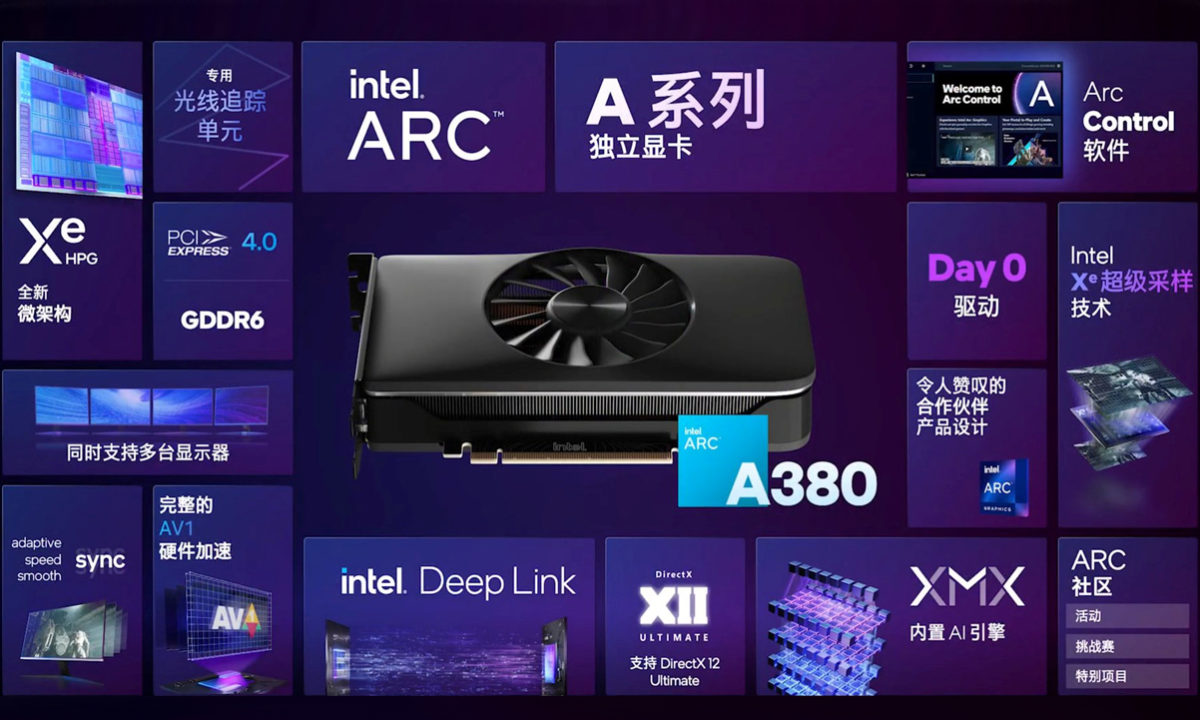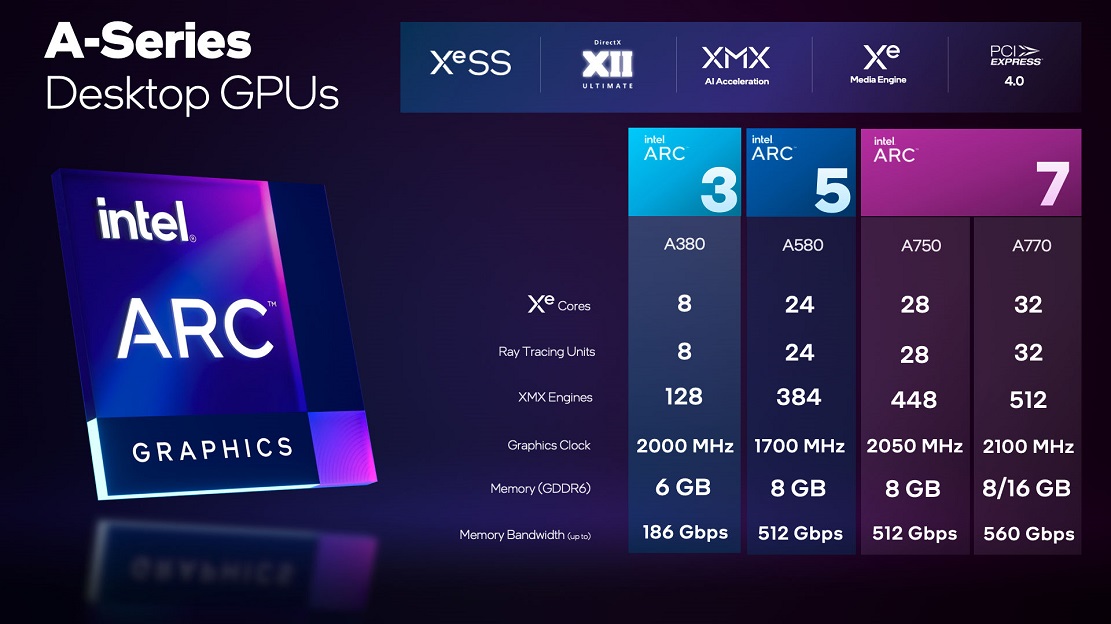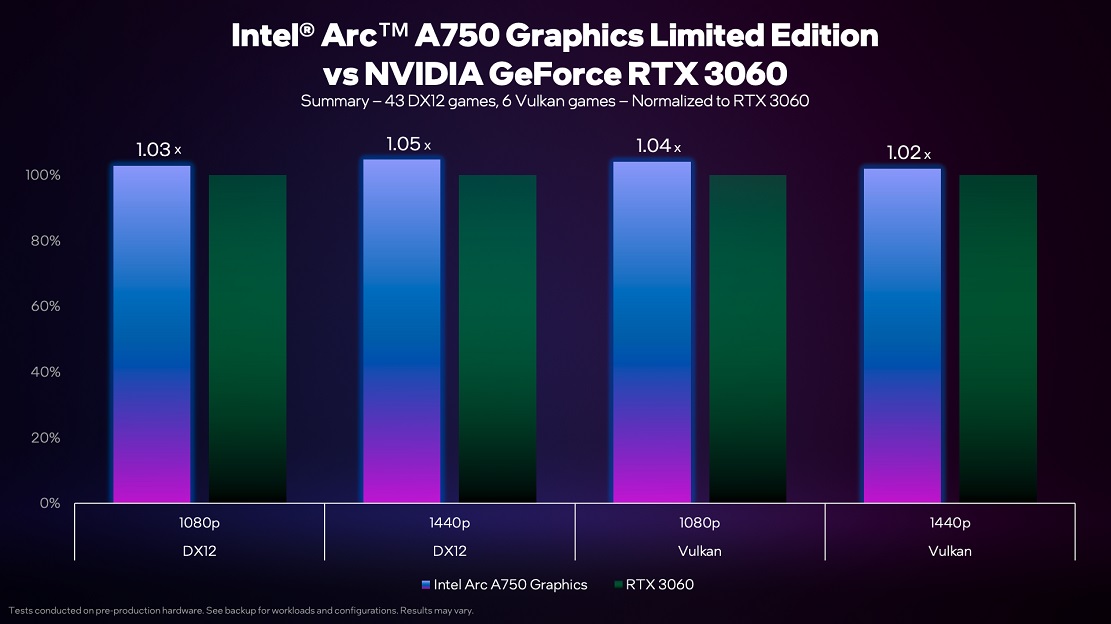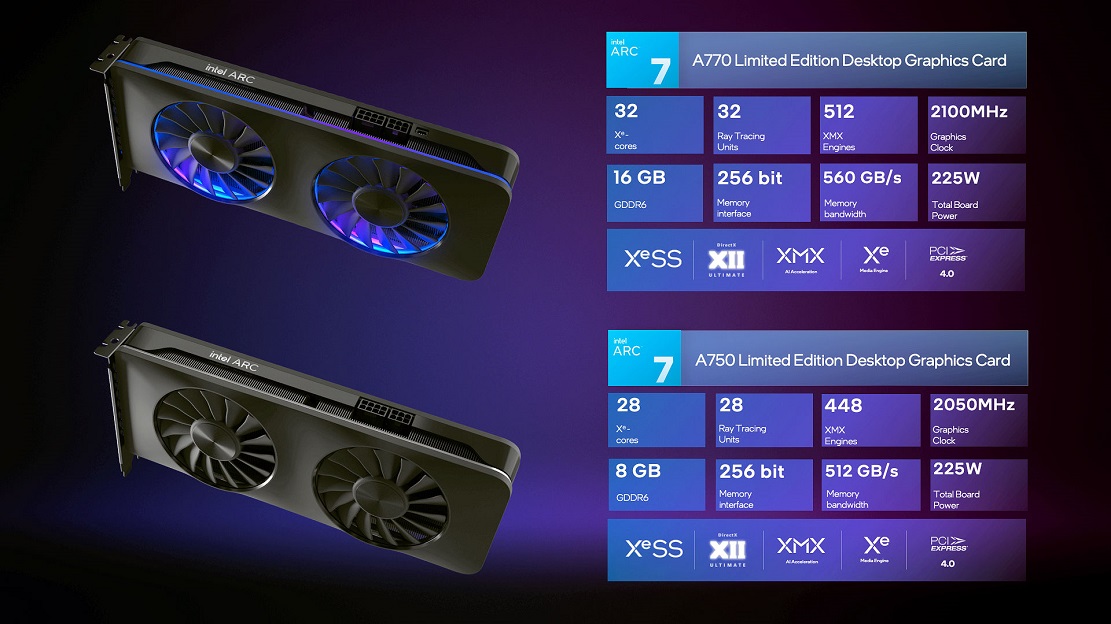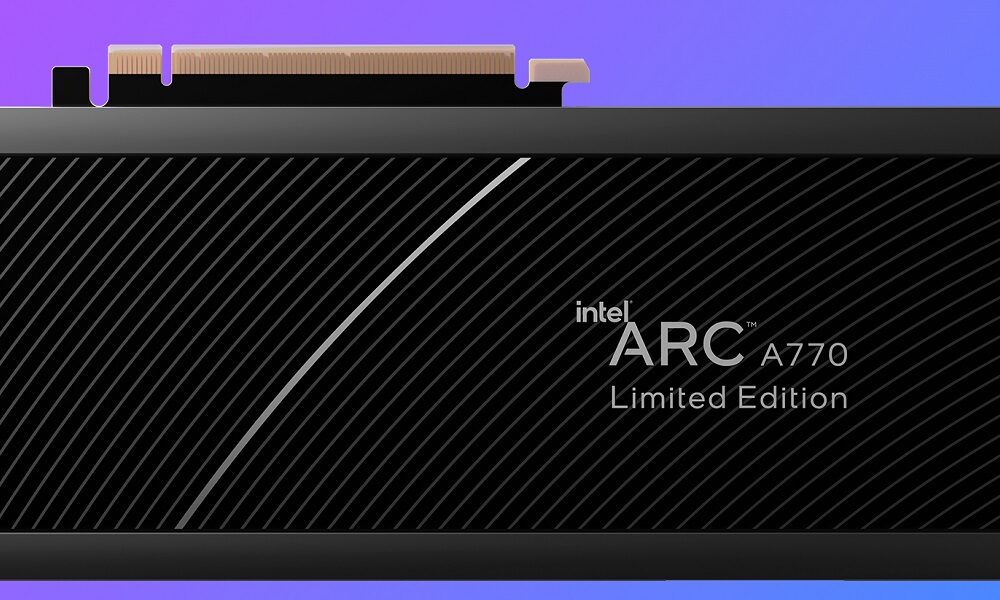
The launch of the Intel Arc Alchemist graphics cards is still up in the air, but we know that their arrival should happen sometime this year, And thanks to the numerous leaks that have been produced and the information that Intel itself has given, we have a pretty clear idea of what we can expect.
I am aware that this graphic generation has generated a lot of interest and a lot of expectation, but at the same time it has also sown certain doubts that have been aggravated by some erroneous interpretations of key information, something that in the end has generated a series of hoaxes that we must overcome once and for all.
For all this, and taking into account that we already know practically all the fundamental keys of the Intel Arc Alchemist, I wanted to give shape to this special article where I am going to share with you all you need to know of this new graphic generation, and where we will also see some myths that we must overcome once and for all.
I am going to maintain a simple structure, easy to read and interpret so that you do not have any doubts, but if after finishing the article you have any questions you can leave it in the comments and we will help you solve it. Without further ado, let’s get started, make yourselves comfortable.
Intel Arc Alchemist architecture
Intel has used an architecture that we can consider state-of-the-art, and has accompanied it with one of the most advanced manufacturing nodes in existence, the TSMC 6nm one. The basis of this architecture is found in the Xe HPG corefollow “high performance gaming”, which would be the equivalent of the SM unit in the case of the NVIDIA GeForce RTX and the CU unit in the case of the AMD Radeon RX.
Each Xe HPG core has 128 shaders or FP32 cores, 8 texturing units, one RTU core, 16 XMX matrix engines and 16 vector engines, plus a 512 KB L2 cache. Intel can combine multiple Xe HPG cores to create more powerful GPUs, in the same way that NVIDIA and AMD design more powerful GPUs with higher SM and CU unit counts, respectively.
As we can see, Intel has clearly opted for specialization, a path that NVIDIA already embarked on in 2018 with the GeForce RTX 20, since it has integrated cores specifically dedicated to the ray tracing acceleration and XMX arrays that are dedicated to AI acceleration and deep learning. Both elements relieve shaders of important workloads, and make it possible to access two next-generation technologies: ray tracing applied to games in real time and intelligent rescaling supported by deep learning.
The RTU-unit that Intel has used is a very advanced solution, since calculates all workload related to ray tracing, including BVH collisions and intersections, can also work asynchronously (without having to wait for shaders) and rely on the Thread Classification Unit (TSU) to further improve performance. Broadly speaking, Intel has surpassed the Radeon RX 6000 with its architecture in terms of ray tracing acceleration, and according to the company itself it is at the level of the GeForce RTX 30.
For their part, the XMX arrays They work in a comparable way to tensor cores, as they are used to speed up Intel XeSS, a state-of-the-art upscaling technology that uses spatial, temporal and motion vector elements, and is supported by artificial intelligence to achieve high-quality image reconstruction. Broadly speaking, this technology should play in the same league as NVIDIA’s second generation DLSS, and according to Intel it will be able to double the performance in games.
Intel Arc Alchemist is supported by an advanced, specialized and highly scalable architecture that of course has a lot of potential although it is true that he still has pending accounts at the level of optimization and drivers. We already saw it when we talked about the support of obsolete APIs, an issue that the chip giant is taking very seriously, and that will gradually improve.
Intel Arc Alchemist graphics cards: models, specifications and performance
In total, Intel is planning to release four Arc Alchemist graphics cards, with which it will cover what we can consider as low range, medium range and medium-high range. The Intel Arc Alchemist 3 A380, which is the low-end model, has been available for some time in the Chinese market and has recently arrived in the US market, but the rest of the models are still pending release.
Despite this, thanks to the latest video that Intel shared through its official YouTube channel, we are clear about the specifications of each and every one of the Intel Arc Alchemist graphics cards that it is going to launch on the market, and we are also clear the approximate return we can expect of every one of them.
Intel Arc 3 A380 Specifications
- 8 Xe cores.
- 1,024 shaders.
- GPU at 2,000MHz.
- 128 XMX arrays.
- 8 RTU cores.
- 96 bit bus.
- 6 GB of GDDR6 (186 GB/s of bandwidth).
Its performance is at the level of a Geforce GTX 1650which means that it is a graphics card capable of running games in 1080p resolution as long as we adjust the level of graphic quality based on the demands of each specific title.
It has the power advantage accelerate ray tracing and support hardware Intel XeSS intelligent rescaling, which in the end would make it a more interesting option in terms of price-performance value. It fits in the low range.
Intel Arc 5 A580 Specifications
- 24 Xe cores.
- 3,072 shaders.
- GPU at 1,700MHz.
- 384 XMX arrays.
- 24 RTU cores.
- 256 bit bus.
- 8 GB of GDDR6 (512 GB/s of bandwidth).
This model should be more or less at the level of a GeForce RTX 3050which means that it will be able to move games in 1080p and maximum qualities, and games in 1440p by adjusting the level of graphic quality.
Fit inside the mid-range.
Intel Arc 7 A750 Specifications
- 28 Xe cores.
- 3,584 shaders.
- GPU at 2,050MHz.
- 448 XMX arrays.
- 28 RTU cores.
- 256 bit bus.
- 8 GB of GDDR6 (512 GB/s of bandwidth).
A graphics card that according to performance tests shared by Intel is slightly above the GeForce RTX 3060which means that it can play current games in 1440p with maximum qualities without problems.
It is located within the mid-rangealthough a step above the previous one.
Intel Arc 7 A770 Specifications
- 32 Xe cores.
- 4,096 shaders.
- GPU at 2,100MHz.
- 512 XMX arrays.
- 32 RTU cores.
- 256 bit bus.
- 8-16 GB of GDDR6 (560 GB/s of bandwidth).
This graphics card would be more or less at the level of a GeForce RTX 3060 Ti, although we will have to wait to see reliable performance comparisons to be able to draw conclusions. However, the latest information we have seen indicates that it will not reach the level of the GeForce RTX 3070 as the first leaks and rumors pointed out.
His position is mid-high range.
Intel Arc Alchemist release date and prices
We still don’t have a definitive release date that we can mark on the calendar, although as we have said the Intel Arc Alchemist 3 A380 is already available in some markets. The chip giant recently confirmed that it will launch the Intel Arc Alchemist 7 A750 and A770 very soon, so we can expect both to hit the market. before the end of 2022As long as everything goes according to plan.
Regarding the price, Intel has also said on several occasions that the Arc Alchemist will have a very competitive price, although it has not gone into details. All in all, and based on the information we have seen so far, we have a fairly reliable estimate that we can share with you, and that will serve as a reference:
- Intel Arc Alchemist 3 A380: now available for $149.99.
- Intel Arc Alchemist 5 A580: should cost between 200 and 249 dollars.
- Intel Arc Alchemist 7 A750: its price will be between 299 and the 349 dollars.
- Intel Arc Alchemist 7 A770 – most likely to cost between 349 and 399 dollars.
Questions and answers: things you should be clear about
Is it essential to have ResizableBAR technology?
Indeed, it is essential because the absence of such technology can reduce the performance of Intel Arc Alchemists almost in half. Intel itself has recognized this, and has even said that if we don’t have a PC that allows ResizableBar to be activated, we shouldn’t buy these graphics cards.
Will I be able to use Intel XeSS if I don’t have an Intel Arc Alchemist graphics card?
Well yes, but the performance improvement will be less, since it will not be accelerated by specialized hardware, but through the DP4a instructions. If your graphics card supports them, you can enable Intel XeSS accelerated via software.
Will Intel Arc Alchemist be compatible with AMD processors?
Yes, in fact, we have already seen performance tests with Ryzen 5000 processors and we can confirm that the Intel Arc Alchemist works without any problem, and that they also offer the expected level of performance, that is, they do not lose performance by using them with AMD processors. .

Performance of an Intel Arc Alchemist 3 A380 with a Ryzen 5000.
Will I have compatibility problems with games under DirectX 11?
The first stability and compatibility tests we have seen with the Intel Arc 3 A380 confirm that some graphics glitches may occur, but these are minor and stability and compatibility it is generally very good. It is not perfect, and in fact it is confirmed that the performance has to improve with old APIs, but today the confirmed cases of serious failures can be counted on the fingers of the hands.
What games will support Intel XeSS?
We can expect that in the medium and long term the list of games compatible with this technology will be quite extensive, and that it will include the most important triple A of the moment. Right now we have confirmed a total of 19 confirmed titles that will support this technology, including such big names as Call of Duty: Modern Warfare II, Ghostwire Tokyo, Shadow of The Tomb Raider, Hitman III, Gotham Knights, and Death Stranding: Director’s Cut.
Will I need a new motherboard or a new power supply?
AbsolutelyIntel Arc Alchemist graphics cards use the standard PCIe connector and use the classic 6-pin and 8-pin additional power connectors, which means you won’t have to change anything, unless you have a power supply that do not reach the minimum recommended power level to be able to move the most powerful Intel Arc Alchemist with guarantees.
Will the performance of Intel Arc Alchemists improve over time?
The chip giant has confirmed that we should not expect a substantial performance improvement through optimizationssa driver level. This means that the performance of the Intel Arc Alchemist will remain at the levels we already know, and that a “fine wine” effect cannot be expected, as has occurred in the case of some NVIDIA and AMD graphics cards.
Will it be feasible to turn on ray tracing without the fluidity sinking?
Everything will depend on the demands of the game, the power of the Intel Arc Alchemist that we are using and the resolution and graphic settings. In the end we must not forget that ray tracing is very demanding, and that even with advanced hardware acceleration it will have a considerable impact on performance. However, thanks to Intel XeSS we can counter it.
Are Intel Arc Alchemist prices really competitive?
right now yes, provided that the values we have seen are confirmed, and provided that the launch of the Intel Arc Alchemist occurs before a possible price reduction occurs in its equivalent models within the NVIDIA and AMD catalog. In general terms, I have always thought that Intel had a fairly competitive product in its hands in terms of quality and price, and I still think so, but I also think that delaying its launch so much is not doing it any good.
